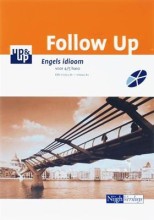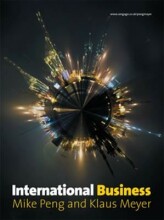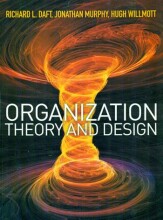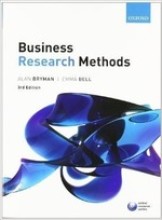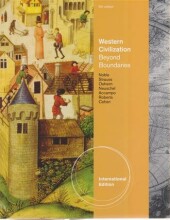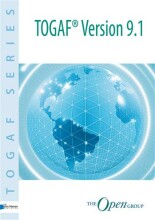Overall Perceptual Quiz
37 important questions on Overall Perceptual Quiz
The Necker Cube is an example of
a) illusory contours
b) an afterimage
c) an ambiguous figure
d) pop-out
A stimulus is
a) the physical energy that begins the perceptual process
b) the psychological correlate of physical energy
c) the manner in which sensory nerve fibers communicate with one another
d) another word for a perception
The process by which light is converted into nerve cell activity is called
a) phototransduction
b) photopigmentation
c) phototransmission
d) photoconjunction
- Higher grades + faster learning
- Never study anything twice
- 100% sure, 100% understanding
An eyeball that is too short for it's optics is
a) hyperopic
b) myopic
c) emmetropic
d) astigmatic
Most of the ________ cones are found in the ___________ of the retina
a) 5 million; periphery
b) 5 million; fovea
c) 5 thousand; periphery
d) 5 thousand; fovea
The axons of the ________ cells make up the optic nerve
a) rod and cone
b) ganglion
c) bipolar
d) complex cells
Receptive fields are defined as the
a) spatial range over which an individual can see at a given time
b) spatial range over which light increases the response of a cell
c) spatial range over which light has an influence on a cell's response
d) concentric center/surround layout of retinal ganglion cells
At a given retinal eccentricity, the size of P ganglion cell receptive fields tends to be
a) larger than M cell receptive fields
b) smaller than M cell receptive fields
c) the same size as M cell receptive fields
d) unrelated
An object whose image falls on the nasal portion of the eye is sent to the ________ side of the brain
a) left
b) right
c) ipsilateral
d) contralateral
The lateral geniculate nucleus consists of
a) 4 parvocellular layers and 2 magnocellular layers
b) 3 parvocellular layers and 3 magnocellular layers
c) 2 parvocellular layers and 4 magnocellular layers
d) 1 parvocellular layers and 5 magnocellular layers
Which of these statements is true about P cells in the LGN?
a) They respond more quickly and transiently than M cells
b) They are rarely sensitive to the color of the light on their receptive fields
c) They are orientation selective
d) They analyze spatial information at a finer level of detail than M cells
The parietal stream is synonymous with the
a) "what" pathway
b) "focal" system
c) dorsal stream
d) ventral pathway
The extrastriate cortex is ________
a) the temporal lobe
b) all parts of visual cortex not including V1
c) the parietal lobe
d) all of the cortex that is not striate cortex
A monkey with its ________ lobes removed will have difficulty solving a(n) ________ problem
a) parietal; object discrimination
b) frontal; object discrimination
c) parietal; landmark discrimination
d) frontal; landmark discrimination
Milner and Goodale proposed that the "where" pathway should be called the "how" pathway because ________
a) it describes how something moves
b) it provides information needed for taking action on objects
c) it is able to discriminate between two or more object forms
d) its function is too poorly understood
Which area below contains the largest population of directionally selective neurons?
a) MT
b) V4
c) IT
d) striate cortex
The inferotemporal (IT) cortex does not appear to be involved much in processing ________
a) form
b) color
c) objects
d) movement
Which of the following terms means that a specific stimulus is recognized by the pattern of firing of a large number of neurons?
a) population coding
b) serial processing
c) specificity coding
d) sensory coding
The two dimensional retinal image of the 3 dimensional world confounds information about
a) the shape of an object and it's spatial configuration
b) the size and the distance of an object
c) the direction of an object's movement in depth
d) all of the above
An example of an oculomotor cue to depth is
a) stereopsis
b) motion parallax
c) convergence
d) interposition
The difference in the lateral separation between objects in the two eyes' retinal images is called
a) binocular rivalry
b) parallax
c) retinal disparity
d) strabismus
The horopter is
a) the imaginary plane marking the position of all objects located at the same perceived distance
b) the dividing line between crossed and uncrossed disparities
c) a device for measuring object eccentricity
d) both a and b
Special effects people sometimes blow a little smoke into the back regions of their scale models of outdoors scenes to make them appear a little hazy when filmed, and thus, that life-size distances are involved. The depth cue they are using in this situation is ________
a) cast shadows
b) deletion and accretion
c) atmospheric perspective
d) linear perspective
As we ride in a car, nearby objects at the side of the road move past us rapidly, whereas more distant objects appear to move more slowly. Which depth perception cue does this represent?
a) binocular disparity
b) atmospheric perspective
c) motion parallax
d) occlusion
According to Gregory, the upper horizontal figure in the Ponzo (railroad track) illusion looks larger than the lower one because ________
a) the retinal size of the upper figure is larger
b) of veridical perception
c) of size-distance scaling
d) of voluntary eye movements
One person in the Ames room looks shorter than another person, but they are actually the same height. This occurs because the "smaller" person ________
a) has an equally large retinal image, but is perceived to be farther away than the other person
b) has a larger retinal image, but is perceived to be the same distance away as the other person
c) has a larger retinal image, but is perceived to be farther away than the other person
d) has a smaller retinal image, but is perceived to be the same distance away as the other person
The propensity of an object's colour to be mostly unaffected by the spectrum of light falling on that object is called
a) colour contrast
b) colour constancy
c) colour neutrality
d) colour balance
Which of the following has not been used to support colour opponency theory?
a) colour afterimages
b) physiological evidence in the LGN
c) colour contrast effects
d) the presence of 3 cone types
The "blue-yellow" channel has been proposed to
a) calculate the sum of L cones and S cones
b) calculate the difference between the M and L cones
c) calculate the difference between the S cones and the sum of M and L cones
d) calculate the difference between the L cones and the sum of M and S cones
The response of neurons in cortical area V4
a) are closely correlated with the responses of LGN cells
b) frequently demonstrate colour constancy
c) respond exclusively to the wavelength of light
d) is necessary for achromatopsia to occur
One reason that we do not see colour in low light is ________
a) different types of receptors are used in dim and bright light
b) the perceptual system prefers black-and-whitec)
c) stimuli are transformed into black-and-white images in the environmentd)
d) colours cannot be transmitted in dim lighting
Neurons in MST differ from MT neurons in that
a) their receptive fields are much smaller
b) many respond quite strongly to stimulus expansion
c) they are located in the "dorsal" stream
d) all of them respond quite poorly to "looming" stimuli
The inability to recognize previously familiar faces is known as
a) achromatopsia
b) akinetopsia
c) blindsight
d) prosopagnosia
In humans, fusiform face area neurons respond selectively to faces. This area is located in ________
a) a region of area MT
b) the parietal cortex
c) the inferotemporal cortex
d) the striate cortex
When subjects, told to press a button at the onset of a target, are misinformed about the potential location of the target, they
a) are just as fast as when they are told the correct location
b) are as fast as when they are given no prior information about the location
c) are slower than when they are given no prior information about the location
d) frequently fail to detect the target at all
Which of the following types of details is often missed by subjects in a change blindness experiment?
a) change in clothing
b) change in color
c) change in person
d) all of these answers
Amblyopia refers to a condition in which ________
a) a person sees vertical shapes clearly but sees horizontal shapes out of focus
b) one eye has much lower acuity than the other eye
c) a person becomes colour blind
d) a person's eye muscles are not balanced
The question on the page originate from the summary of the following study material:
- A unique study and practice tool
- Never study anything twice again
- Get the grades you hope for
- 100% sure, 100% understanding




















